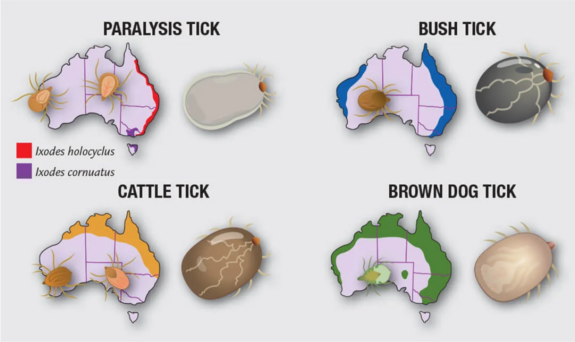If you think you have found a paralysis tick on your pet, the first step is to carefully try and remove it.
When removing, do not put pressure on the tick, as pressing on or rupturing the tick during removal can force additional toxins into your pet. If you are not confident in your ability to remove the tick seek immediate veterinary assistance.
The easiest and least painful method to remove a tick is to use a Tick Twister. This tool allows you to get under the tick's head to remove the entire parasite easily in one go. Tick Twisters are a handy addition to your Pet First Aid Kit.
Once you have removed the tick from your pet, seek immediate veterinary attention. Even if your pet is not showing signs of tick paralysis initially, symptoms could still develop as the toxin can remain active in the body for some time after the tick's removal.
Remember to take the removed tick with you to the vet so that they can identify if it is a paralysis tick. There are other varieties of tick present in Australia which do not secrete the same deadly toxin.
Take Home Message
Prevention is better than cure! Know the symptoms of tick paralysis, keep your pet's preventative treatments up to date and check for ticks daily as no medication is 100% effective at all times.
Remember that if you find a tick on your pet, or if they are showing signs of tick paralysis seek veterinary attention without delay. Tick paralysis is frequently fatal without treatment and the earlier treatment can be provided the better the prognosis.
Further Reading
Budget Better Tips For Pet Owners
Pet First Aid Tips
How To Calm an Anxious Pet
Real Cost of Supermarket Food
Best Sensitive Stomach Food For Dogs and Cats





